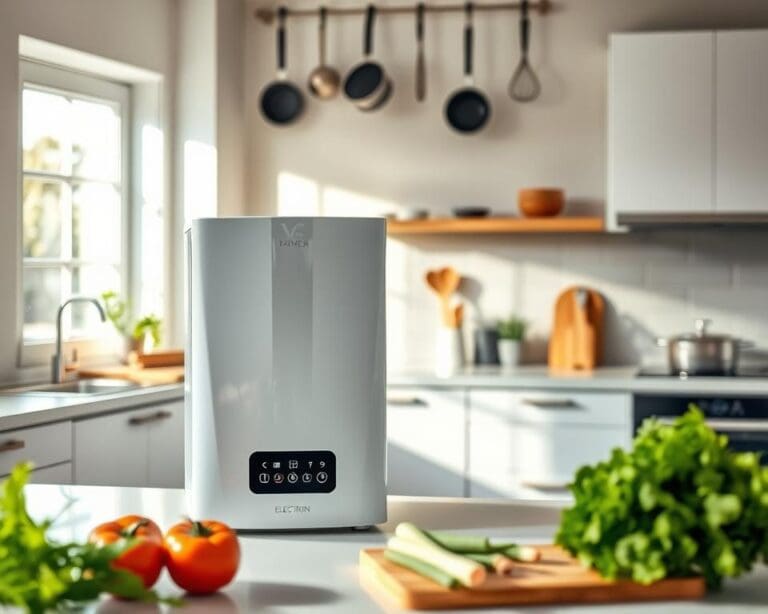Embarking on a fresh start can be a transformative experience, setting the tone for a healthier, more balanced lifestyle. By incorporating simple yet effective wellness strategies, individuals can cultivate a more positive, resilient mindset.
This journey begins with small, achievable changes that can lead to significant improvements in daily wellness. By making conscious choices, individuals can better equip themselves to tackle life’s challenges and achieve a more fulfilling life.
Key Takeaways
- Start with small, achievable changes to improve daily wellness.
- Incorporate simple yet effective wellness strategies into your daily routine.
- Cultivate a positive and resilient mindset to tackle life’s challenges.
- Make conscious choices to achieve a more balanced lifestyle.
- Embark on a journey to a healthier, more fulfilling life.
The Power of a Fresh Start: Why Lifestyle Changes Matter
Embracing a fresh start can be a transformative experience, offering a chance to redefine our lives and set a new course. It’s a moment to reassess our priorities, habits, and goals, paving the way for meaningful lifestyle changes. A fresh start isn’t just about altering our daily routines; it’s about adopting a new mindset that fosters growth, well-being, and happiness.
The significance of a fresh start lies in its ability to inspire and motivate us to make lasting changes. By understanding the psychology behind new beginnings, we can harness this motivation to drive positive transformations in our lives.
The Psychology Behind New Beginnings
The psychology behind new beginnings is rooted in our innate desire for renewal and self-improvement. When we embark on a fresh start, we’re driven by a mix of emotional and psychological factors, including the desire for a better life, the need to overcome past challenges, and the hope for a brighter future. Key psychological drivers include:
- Motivation to change
- Hope for a better future
- Desire for self-improvement
Understanding these drivers is crucial for leveraging the power of a fresh start effectively.
Setting the Foundation for Lasting Change
To turn a fresh start into lasting change, it’s essential to set a solid foundation. This involves setting clear, achievable goals, developing strategies for overcoming obstacles, and cultivating resilience. By doing so, we can ensure that our efforts lead to meaningful, long-term results. Key strategies include:
- Defining clear objectives
- Creating an action plan
- Monitoring progress and adjusting as needed
By following these steps, individuals can transform their fresh start into a lasting, positive transformation.
Morning Rituals to Energize Your Day
A well-crafted morning ritual can set the tone for a productive and fulfilling day. By incorporating simple practices into your morning routine, you can improve your mental clarity, increase your energy levels, and enhance your overall well-being.
Creating a Consistent Wake-Up Routine
Establishing a consistent wake-up routine is crucial for starting your day on a positive note. This can be as simple as setting a regular wake-up time, exposing yourself to natural light, or practicing a short meditation session. Consistency is key to developing a habit that will stick.
Hydration and Nutrition First Thing
Hydrating and fueling your body in the morning is essential for kick-starting your metabolism and providing energy. Drinking a glass of water or a hydrating beverage, followed by a nutritious breakfast, can help jumpstart your day. Consider incorporating nutrient-dense foods, such as fruits, nuts, or whole grains, into your morning meal.
| Morning Routine | Benefits |
|---|---|
| Hydration | Boosts energy, supports metabolism |
| Nutrition | Provides essential vitamins and minerals, supports weight management |
| Morning Movement | Increases circulation, enhances mental clarity |
Movement to Activate Your Body and Mind
Incorporating some form of movement into your morning routine can have a profound impact on your physical and mental well-being. This can be as simple as stretching, yoga, or a short walk. By activating your body and mind, you’ll be better equipped to tackle the challenges of the day ahead.
By incorporating these simple yet effective morning rituals into your daily routine, you can set yourself up for success and create a foundation for a fulfilling day.
Nutrition Strategies for Sustained Energy
A well-nourished body is the foundation for sustained energy and overall well-being. To achieve this, it’s crucial to adopt effective nutrition strategies that support your daily needs.
Eating a balanced diet is key to maintaining energy levels. This involves more than just consuming any food; it’s about making informed choices that fuel your body optimally.
Balanced Meal Planning for Optimal Performance
Balanced meal planning is essential for providing your body with the necessary nutrients to function at its best. This involves including a variety of foods in your meals, such as lean proteins, whole grains, fruits, and vegetables. By doing so, you ensure that you’re getting a broad spectrum of vitamins and minerals.
A well-planned meal also helps in maintaining stable energy levels, preventing the peaks and troughs associated with consuming high-sugar or high-caffeine foods.
Mindful Eating Practices
Mindful eating is the practice of paying full attention to the experience of eating and drinking. It’s about noticing the colors, smells, textures, and flavors of your food, as well as the sensations in your body. This practice can help you develop a healthier relationship with food.
By eating slowly and savoring your food, you’re more likely to feel satisfied with less, reducing the likelihood of overeating and improving digestion.
Smart Snacking and Hydration Throughout the Day
Smart snacking involves choosing snacks that are nutrient-dense rather than high in empty calories. Opting for fruits, nuts, or carrot sticks with hummus can provide a boost of energy without the negative effects associated with processed snacks.
Additionally, staying hydrated is crucial for maintaining energy levels. Drinking water throughout the day can help prevent fatigue, as even mild dehydration can cause a significant drop in energy.
By incorporating these nutrition strategies into your daily routine, you can experience sustained energy and improved overall health.
Physical Activity: Finding Joy in Movement
Incorporating movement into daily life can have a profound impact on overall well-being. Engaging in regular physical activity not only enhances physical health but also boosts mental clarity and emotional resilience. By finding joy in movement, individuals can transform exercise into a sustainable and enjoyable part of their lifestyle.
Incorporating Exercise Into Daily Life
Simple changes can make a significant difference. Taking the stairs instead of the elevator, walking to work, or doing a few jumping jacks during commercial breaks can add up. The key is to find opportunities to move throughout the day, making physical activity a seamless part of daily routines.
Low-Impact Options for Beginners
For those new to exercise, low-impact activities such as yoga, swimming, or brisk walking are excellent starting points. These options are gentle on the joints and can be adapted to various fitness levels, providing a comfortable entry into regular physical activity.
Building Consistency Over Intensity
Rather than focusing on intense workouts, building a consistent routine is more effective in the long run. Aim for regular, manageable sessions of physical activity, gradually increasing duration and intensity as fitness levels improve. This approach fosters a lasting habit, making it easier to maintain a healthy and active lifestyle.
Mindfulness and Mental Clarity Techniques
Embracing mindfulness can lead to a more focused, calm, and clear-minded state. In today’s fast-paced world, it’s easy to get caught up in the hustle and bustle of daily life, often at the expense of our mental well-being. By incorporating mindfulness practices into our daily routine, we can cultivate a greater sense of awareness and clarity.
Mindfulness is not just a practice; it’s a way of living that encourages us to be present in the moment, letting go of distractions and focusing on what truly matters. Through simple yet effective techniques, individuals can reduce stress, enhance their mental clarity, and foster a deeper understanding of themselves.
Simple Meditation Practices for Beginners
For those new to meditation, starting with short, manageable sessions can be incredibly beneficial. Begin by finding a quiet, comfortable space to sit or lie down, close your eyes, and focus on your breath. A simple technique is to count your breaths, starting from one and going up to ten, then starting over. This helps to keep your mind from wandering.
As you become more comfortable with meditation, you can gradually increase the duration of your sessions. Even a few minutes a day can make a significant difference in reducing stress and improving mental clarity.
Breathing Exercises for Stress Reduction
Breathing exercises are a powerful tool for managing stress and promoting relaxation. One effective technique is the 4-7-8 method: breathe in through your nose for a count of four, hold your breath for a count of seven, and exhale through your mouth for a count of eight. This can help slow down your heart rate and calm your mind.
- Start by sitting comfortably with your back straight.
- Place one hand on your belly and the other on your chest.
- Focus on your breath, feeling your belly rise as you inhale.
Journaling for Self-Awareness and Growth
Journaling is a reflective practice that can enhance self-awareness and promote personal growth. By putting your thoughts and feelings into words, you can gain a deeper understanding of yourself and your experiences. Start by setting aside a few minutes each day to write down your thoughts, gratitudes, or insights.
Some find it helpful to use prompts or questions to guide their journaling practice. Examples might include: “What am I grateful for today?” or “What can I improve on tomorrow?”
Lifestyle Tips voor een Frisse Start: Organization and Environment
The environment you live and work in can either hinder or enhance your ability to make lasting lifestyle changes. A well-organized and supportive environment is foundational to a fresh start, impacting your overall well-being and productivity.
To create a more streamlined and efficient living and working space, consider the following strategies.
Decluttering Your Physical Space
Decluttering is a crucial first step in creating an environment that supports your goals. By removing unnecessary items and organizing your belongings, you can reduce stress and improve focus. Start with small areas or tasks to make the process manageable and build momentum.
Creating Systems That Support Your Goals
Once you’ve decluttered, establish systems that help you stay organized and on track. This could include setting up filing systems, implementing a task list, or creating a schedule. The key is to create habits that support your objectives and make it easier to maintain your space.
Environmental Design for Productivity and Wellness
The design of your environment can significantly impact your productivity and overall wellness. Consider factors such as lighting, color schemes, and the layout of your space. By optimizing these elements, you can create an environment that fosters productivity, relaxation, and overall well-being.
By implementing these strategies, you can create a living and working space that not only supports your immediate goals but also contributes to your long-term well-being and success.
Digital Detox and Mindful Technology Use
In today’s technology-driven world, finding a balance between our digital lives and mental well-being is crucial. The constant stream of notifications, emails, and social media updates can be overwhelming, leading to increased stress levels and decreased productivity. Practicing a digital detox and adopting mindful technology use can help mitigate these effects, promoting a healthier and more balanced lifestyle.
Establishing Limits with Devices
Setting healthy boundaries with devices is essential for maintaining a healthy digital-life balance. This can be achieved by designating device-free times and places, such as during meals or before bed. By doing so, individuals can reduce their exposure to the constant stream of digital information and create space for relaxation and self-reflection.
For instance, implementing a “no phone zone” in the bedroom can significantly improve sleep quality. Limiting screen time before bed can lead to better rest and recovery, ultimately enhancing overall well-being.
Creating Spaces and Times Free from Technology
Creating tech-free zones and times is another effective strategy for practicing mindful technology use. This can involve setting aside device-free days or hours, or designating specific areas as tech-free, such as the dinner table or living room. By creating these boundaries, individuals can cultivate a greater sense of presence and connection with their surroundings.
“The ability to simplify means to eliminate the unnecessary so that the necessary may speak.” – Hans Hofmann
Leveraging Technology to Support Wellness
While it may seem counterintuitive, technology can also be a powerful tool for supporting wellness. There are numerous apps and digital platforms designed to promote mindfulness, meditation, and physical activity. By leveraging these resources, individuals can enhance their mental and physical well-being, rather than allowing technology to detract from it.
| Technology Use | Wellness Benefits |
|---|---|
| Mindfulness Apps | Reduced stress, increased focus |
| Fitness Tracking | Improved physical activity, health monitoring |
| Meditation Platforms | Enhanced mental clarity, relaxation |
By adopting a mindful approach to technology use, individuals can transform their digital lives, fostering a more balanced and healthy lifestyle. This involves being intentional about how technology is used, setting boundaries, and leveraging digital tools to support overall wellness.
Sleep Optimization for Recovery and Renewal
Optimizing sleep is essential for overall well-being, as it directly impacts our body’s ability to recover and renew. Quality sleep is not just about the quantity of rest but also the quality of the sleep environment and pre-sleep routines.
A good night’s sleep is foundational to physical health, mental clarity, and emotional stability. As we sleep, our body repairs and regenerates tissues, builds bone and muscle, and strengthens our immune system. Thus, creating an environment conducive to quality sleep is crucial.
Creating the Ideal Sleep Environment
The sleep environment plays a significant role in determining the quality of sleep. A dark, quiet, and cool environment can significantly enhance sleep quality.
- Darkness: Darkness triggers the production of melatonin, the hormone responsible for inducing sleep.
- Quiet: A quiet environment reduces distractions and interruptions, making it easier to fall and stay asleep.
- Cool Temperature: A cooler room temperature is associated with better sleep quality.
| Sleep Environment Factor | Ideal Condition | Benefit |
|---|---|---|
| Light | Dark | Melatonin production |
| Noise | Quiet | Reduced sleep interruptions |
| Temperature | Cool | Improved sleep quality |
Evening Routines for Better Rest
Establishing a relaxing evening routine can signal the body that it’s time to sleep, enhancing the quality of rest. Activities such as reading, meditation, or a warm bath can help in unwinding.
“A consistent sleep schedule and a calming pre-sleep routine can significantly improve sleep quality.” –
Some effective evening routines include:
- Reading a book
- Practicing gentle stretches or yoga
- Meditation or deep breathing exercises
- Taking a warm bath
Addressing Common Sleep Disruptors
Common disruptors such as caffeine, electronic devices, and stress can significantly impact sleep quality. Being mindful of these factors and taking steps to mitigate their effects can improve sleep.
Limiting caffeine intake to the morning and early afternoon can help avoid disrupting sleep patterns. Similarly, avoiding screens for at least an hour before bedtime can reduce the stimulating effects of blue light.
Stress management techniques, such as journaling or mindfulness practices, can also help in reducing stress-related sleep disruptions.
Conclusion: Sustaining Your Fresh Start Journey
Embarking on a fresh start journey is just the beginning. Sustaining change and maintaining momentum are crucial for achieving long-term wellness. By incorporating the strategies discussed throughout this article, individuals can continue making progress toward their goals.
Establishing a consistent routine, prioritizing nutrition and physical activity, and practicing mindfulness are essential for sustaining a healthy lifestyle. As you continue on your fresh start journey, remember to be patient and compassionate with yourself.
Long-term wellness is not a destination, but a continuous process. By staying committed to your goals and making adjustments as needed, you can maintain a balanced and healthy lifestyle. Focus on progress, not perfection, and celebrate your successes along the way.
By doing so, you’ll be better equipped to navigate life’s challenges and maintain the momentum necessary for sustaining change and achieving long-term wellness.








